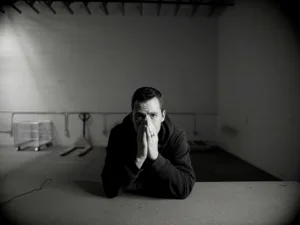Suicide is a complex and tragic issue that affects individuals of all genders and identities. However, certain statistics highlight the particular risk men often face concerning suicide. Understanding these statistics, particularly Colorado’s suicide rate and the underlying factors can help us develop effective strategies to address and prevent suicide among men. This article aims to provide insights into the male-specific aspects of suicide risk and explore ways to address this pressing public health concern.
If you or someone you know is experiencing suicidal thoughts or crisis, contact 988 offers 24/7 judgment-free support for mental health, substance use, and more. Text, call, or chat 988.
Facts and Figures about Men’s Suicide
Men consistently experience higher rates of suicide compared to women, highlighting the importance of exploring the factors contributing to this disparity. By delving into the statistics and data surrounding men’s suicide, we can gain valuable insights into the scope of the problem, the demographic patterns, and the underlying risk factors.
Higher Suicide Rates
Across many countries, men consistently exhibit higher rates of completed suicide compared to women. In the United States, for instance, men account for approximately 75% of all suicide deaths. The Colorado suicide rate is 35.4 per 100,000, substantially higher than the national average of 22.9.
Age
Middle-aged men, specifically those between 35 and 44, make up the highest number of suicide deaths. The risk of suicide is further heightened among individuals in this age group who have a mental illness or engage in alcohol abuse. Middle-aged men who die by suicide are also the least likely among all demographic groups to seek mental health treatment before their deaths.
Demographic Differences
Men in certain demographic groups, such as veterans and LGBTQ+ individuals, may face an elevated risk due to various unique challenges and experiences.
Why is the Colorado Suicide Rate so High?
In 2020, the CDC ranked Colorado’s suicide rate seventh in the nation. That year, 1,294 men died by suicide in the state. The following year, 1,370 men died by suicide in Colorado (compared to 275 and 303 women, respectively).
There are no clear reasons why men in Colorado die by suicide at a higher rate than elsewhere, though western states, in general, have higher suicide rates.
According to a report by the Colorado Trust, the largest number of suicide deaths have taken place in metropolitan Denver counties such as Adams, Arapahoe, Douglas and Jefferson. In 2021, El Paso County reported the most suicide deaths in the state.
Factors Contributing to the High Rate of Male Suicides
Many different factors may contribute to the higher rate of suicide in men in Colorado and elsewhere.
Societal Expectations
Traditional masculine norms often discourage men from seeking help or expressing vulnerability, creating a barrier to accessing mental health support. Societal pressures to appear strong and resilient may deter men from seeking help for mental health concerns, resulting in underdiagnosis and undertreatment of conditions like depression or anxiety. The belief that seeking help is a sign of weakness or that mental health struggles are not masculine can prevent men from seeking professional assistance.
Mental Health Stigma
The stigma surrounding mental health issues can be particularly strong among men. The fear of judgment or being perceived as “less than” can act as a barrier to accessing mental health care. This can lead to feelings of isolation and the perception that seeking help is a sign of weakness.
Underdiagnosis and Undertreatment
Men may be less likely to be diagnosed with mental health conditions due to various factors, including differences in symptom presentation and their reluctance to seek help. Undiagnosed or untreated mental health conditions, such as depression or anxiety, can increase the risk of suicidal thoughts and behaviors.
Substance Abuse
Substance abuse, including alcohol and drugs, is often intertwined with mental health issues and can contribute to an increased risk of suicide among men. Substance abuse can exacerbate underlying mental health conditions and impair judgment, leading to impulsive behaviors.
Access to Lethal Means
Men tend to use more lethal methods in suicide attempts, such as firearms, contributing to higher completion rates. Easy access to these means increases the risk of impulsive actions during moments of crisis.
Age and Cohort Effects
Suicide rates among men tend to increase with age, with older men at a higher risk. While middle-aged men have the highest suicide completion rate, there is a particularly high incidence among those 75 years or older. Factors such as retirement, social isolation, loss of social support networks and health issues can contribute to the vulnerability of older men. Among the elderly population who die by suicide, the majority are white and unmarried.
Recognizing Suicidal Warning Signs
Recognizing suicidal warning signs is crucial for identifying individuals who may be at risk and providing them with the necessary support. While every person is unique, some common warning signs of suicidal thoughts or behaviors include:
- A marked or noticeable change in an individual’s behavior
- Alcohol or drug abuse
- A decline in performance at work, school or other activities
- Deteriorating physical appearance
- Giving away favorite possessions
- Inappropriate good-byes
- An obsession with death and talking about suicide
- Previous suicide attempts or talking about a desire to die
- The purchase of a gun or pills
- Taking reckless actions
- The sudden improvement in symptoms after a long period of depression
- Symptoms of depression
- Phrases such as “I can’t go on” or “Everyone would be better off without me”
Remember, addressing suicide risks requires professional intervention and support. If you believe someone is in immediate danger, do not hesitate to contact emergency services or a helpline in your county for immediate assistance.
Recognizing Suicidal Warning Signs in Yourself
Recognizing the early warning signs of suicide risk in yourself is an essential step in taking care of your mental health and seeking the help you may need. Here are some common warning signs to be aware of:
Changes in Mood. Persistent feelings of sadness, hopelessness or despair that don’t seem to go away. You may experience extreme mood swings or sudden shifts from feeling low to feeling calm or indifferent.
Increased Isolation. Withdrawing from social activities, distancing yourself from friends and family, or feeling a sense of detachment from others. You may find it difficult to connect with people or have the desire to be alone most of the time.
Loss of Interest. Losing interest in activities you once enjoyed or finding it challenging to enjoy things that used to bring you happiness. This could include hobbies, socializing or engaging in your favorite pastimes.
Changes in Sleep Patterns. Significant changes in your sleep patterns, such as insomnia (difficulty falling asleep or staying asleep) or hypersomnia (excessive sleeping). Disrupted sleep can have a significant impact on your overall well-being.
Increased Anxiety or Agitation. Feeling constantly on edge, anxious, or restless. You may experience irritability, racing thoughts, or feeling overwhelmed by daily tasks.
Feelings of Guilt or Worthlessness. Experiencing excessive guilt or feelings of worthlessness that persistently impact your self-esteem. You may blame yourself for problems, criticize yourself excessively or believe that you’re a burden to others.
Changes in Appetite. Significant changes in appetite, such as loss of appetite leading to weight loss or increased appetite resulting in weight gain. These changes may be unrelated to any physical health conditions.
Preoccupation with Death or Suicide. Persistent thoughts or preoccupation with death, dying or suicide. You may find yourself frequently contemplating suicide as a way to escape pain or feeling that life is not worth living.
Increased Substance Use. Escalating alcohol or drug use as a means of coping with emotional distress. Substance abuse can exacerbate underlying mental health issues and increase the risk of suicidal thoughts.
Addressing Suicide Risks
Addressing suicide risks requires a comprehensive and multi-faceted approach and should involve individuals, communities, mental health professionals, policymakers and organizations.
The following are large-scale shifts that would likely contribute to lowered rates:
- Increased mental health awareness
- Reduced stigma
- Enhanced access to mental health services
- Mental health screening
- Responsible media reporting
- Restricted access to lethal means
- Promotion of the building of supportive communities
- Enhanced crisis hotlines and helplines
What to Do if a Loved One Exhibits Suicide Risk
It can be frightening if someone you love exhibits signs of depression or suicidal ideation. The first step is to let them know you are there without judgment. Ask your loved one how they feel, and be prepared to listen with compassion and an open mind.
If you notice warning signs like those listed above, encourage your loved one to seek professional help and assist them in making a plan to see a therapist.
It’s also important to know when a risk elevates to a crisis. According to Cedars-Sinai, “Suicidal ideation encompasses both general thoughts of wanting to die and an active desire to take your own life. If someone says they are considering suicide — especially if they have a plan — it becomes a mental health crisis and requires a higher level of care.”
If your loved one has reached a crisis point, ask them to contact the Suicide & Crisis Lifeline at 988 or dial 911. If they can’t or won’t take action, make the call yourself.
Addressing Suicidal Risks in Yourself
Addressing the early warning signs of suicide risk in yourself is crucial for your well-being and safety. Here are some steps you can take:
Acknowledge and Validate Your Feelings. Recognize that what you’re experiencing is valid and deserves attention. Accept that it’s okay to ask for help and that seeking support is a sign of strength.
Develop a Safety Plan. Work with a mental health professional to develop a safety plan tailored to your situation. This plan outlines steps to take when you’re feeling overwhelmed or at risk, including identifying trusted contacts, coping strategies and emergency resources. Part of this is a plan to make your environment safe. If you own firearms, make sure they are stored safely and securely, locked and unloaded. Consider asking a trusted friend to hold onto your firearm until the crisis has passed. In Colorado, those who store a gun for a friend must be legally allowed to have a gun in their possession and may need to undergo a background check. Look to your state’s government entities for details on associated liability.
Reach Out to a Trusted Person. Talk to someone you trust, such as a close friend, family member or a mental health professional. Share your concerns and feelings openly, allowing them to provide support and guidance.
Seek Professional Help. Reach out to a mental health professional, such as a therapist or counselor, who specializes in suicide prevention and can provide appropriate guidance and treatment. They can help you navigate your emotions, develop coping strategies and create a safety plan.
Lean on Support Services. Explore available support services, such as helplines or crisis hotlines specific to suicide prevention. These services provide immediate assistance, guidance and a listening ear when you need it most.
Remove Lethal Means. If you have access to lethal means, such as firearms or medications, and you’re feeling at risk, take immediate steps to remove or secure them. Restricting access to these means can provide a critical barrier during moments of crisis.
Stay Connected. Maintain social connections with supportive friends and family members who can offer understanding and encouragement. Participate in activities that foster a sense of belonging and purpose.
Educate Yourself. Learn more about suicide prevention, mental health and coping strategies. Understanding your own triggers and warning signs can empower you to recognize when you may need additional support and take proactive steps to address your mental health.
Follow Treatment Recommendations. If a mental health professional has provided you with a treatment plan or prescribed medication, make sure to follow their recommendations and attend therapy sessions and medical appointments regularly.
Text “TALK” to 38255. If you are experiencing any suicidal thoughts or considering self-harm, call 988 at any time. The Suicide and Crisis Lifeline provides 24/7, free and confidential support for people in distress and prevention and crisis resources for you or your loved ones.
What Are the Next Steps?
Addressing the Colorado suicide risk faced by men requires a multifaceted approach that recognizes the societal and cultural factors that contribute to the issue. By challenging stereotypes, promoting mental health awareness, and expanding accessible support services, we can create an environment where men feel encouraged and supported to seek help when needed and reduce the Colorado suicide rate. Together, we can strive to reduce the devastating impact of suicide on individuals, families and communities.
If you or someone you know is experiencing suicidal thoughts or crisis, please contact the Colorado Crisis Services at 1-844-493-8255. You can also text TALK to 38255 for support. These helpline services are available 24/7 and can provide immediate assistance and resources. Remember, you are not alone; your community is ready to help you through difficult times.














